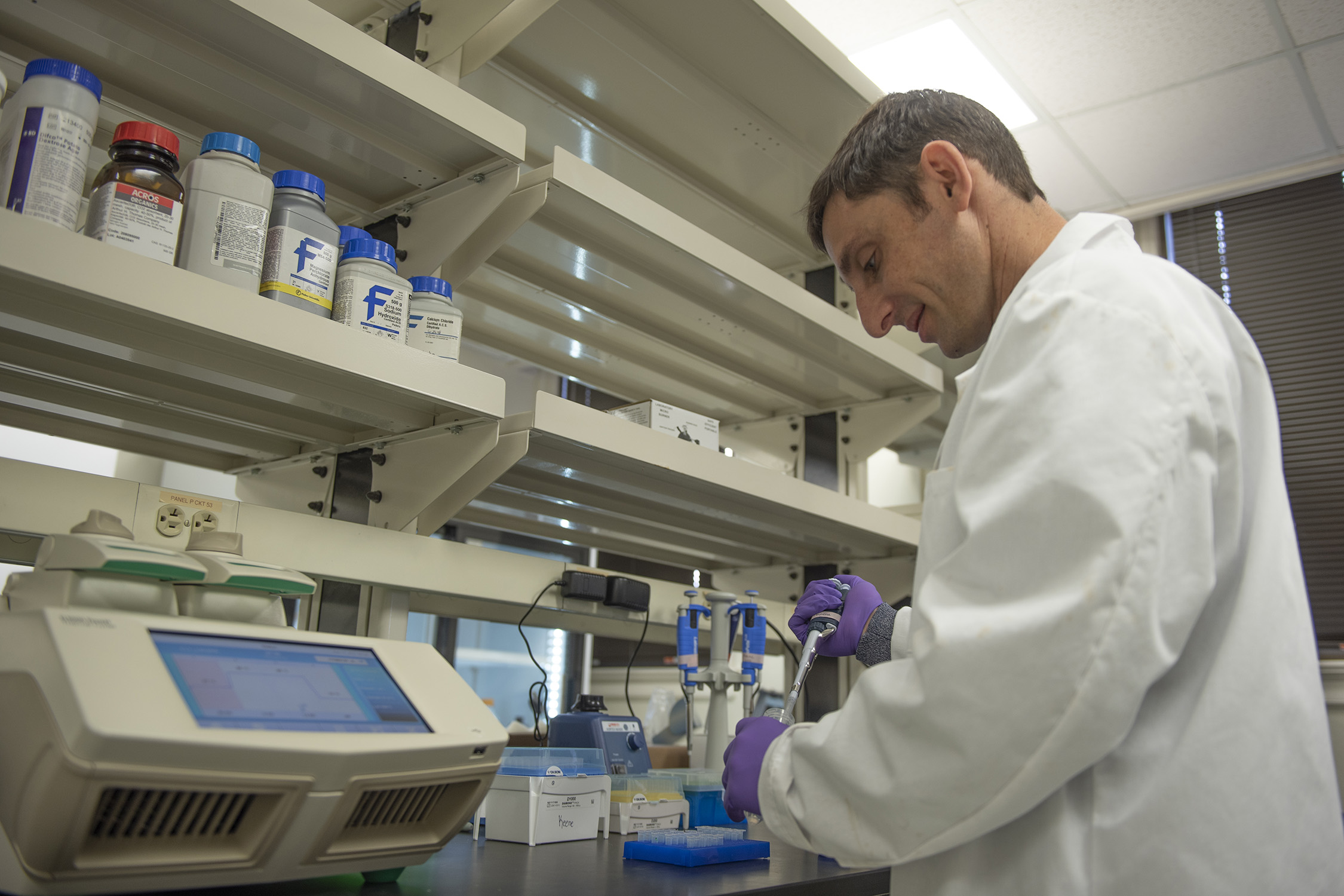
A National Institutes of Health-funded effort involving researchers from Texas A&M University, the Perelman School of Medicine at the University of Pennsylvania and Children’s Hospital of Philadelphia (CHOP) has used human genomics to identify a new genetic pathway involved in regulating sleep from fruit flies to humans — novel insight that could pave the way for new treatments for insomnia and other sleep-related disorders.
Texas A&M geneticist and evolutionary biologist Alex Keene collaborated with Penn's Allan Pack and Philip Gehrman and CHOP’s Struan Grant on the groundbreaking research, which is published today (Jan. 6) in Science Advances.
“There have been enormous amounts of effort to use human genomic studies to find sleep genes,” Keene said. “Some studies have hundreds of thousands of individuals. But validation and testing in animal models is critical to understanding function. We have achieved this here, largely because we each bring a different area of expertise that allowed for this collaboration's ultimate effectiveness.”

Keene says the most exciting thing about the team’s work is that they developed a pipeline starting not with a model organism, but with actual human genomics data.
“There is an abundance of human genome-wide association studies (GWAS) that identify genetic variants associated with sleep in humans,” Keene said. “However, validating them has been an enormous challenge. Our team used a genomics approach called variant-to-gene mapping to predict the genes impacted by each genetic variant. Then we screened the effect of these genes in fruit flies.
“Our studies found that mutations in the gene Pig-Q, which is required for the biosynthesis of a modifier of protein function, increased sleep. We then tested this in a vertebrate model, zebrafish, and found a similar effect. Therefore, in humans, flies and zebrafish, Pig-Q is associated with sleep regulation.”
Keene says the team's next step is to study the role of a common protein modification, GPI-anchor biosynthesis, on sleep regulation. In addition, he notes that the human-to-fruit flies-to-zebrafish pipeline the team developed will allow them to functionally assess not only sleep genes but also other traits commonly studied using human GWAS, including neurodegeneration, aging and memory.
“Understanding how genes regulate sleep and the role of this pathway in sleep regulation can help unlock future findings on sleep and sleep disorders, such as insomnia,” said Gehrman, an associate professor of clinical psychology in psychiatry at Penn and a clinical psychologist with the Penn Chronobiology and Sleep Institute. “Moving forward, we will continue to use and study this system to identify more genes regulating sleep, which could point in the direction of new treatments for sleep disorders.”
The resulting paper detailing the team's NIH-funded research (Grant No. 5R01HL143790-03, among others) can be viewed online along with related figures and captions.

Keene, who was honored as a Kavli Fellow by the National Academy of Sciences in 2019, joined the Texas A&M faculty as head of the Department of Biology in August 2019. His research within his Center for Biological Clocks Research-affiliated laboratory lies at the intersection of evolution and neuroscience, with primary focus on understanding the neural mechanisms and evolutionary underpinnings of sleep, memory formation and other behavioral functions in fly and fish models. Specifically, he studies fruit flies (Drosophila melanogaster) and Mexican cavefish that have lost both their eyesight and ability to sleep with the goal of identifying the genetic basis of behavioral choices which factor into human disease, including obesity, diabetes and heart disease.
Keene earned his Ph.D. in biomedical sciences from the University of Massachusetts Medical School in 2006 and completed consecutive postdoctoral research stints at the Institute of Molecular Pathology in Vienna (2006-2007) and New York University (2008-2011) prior to beginning his independent academic career in 2011 as an assistant professor of biology at the University of Nevada, Reno. Four years later, he moved to Florida Atlantic University as an associate professor of biological sciences in the Charles E. Schmidt College of Science, earning promotion to full professor in 2020 and recognition with Florida Atlantic’s Researcher of the Year Award in 2019. He served as a member of the Institutional Research Council and also helped develop the Jupiter Life Science Initiative into a leading research group within the university.
See a related feature from The Battalion.

